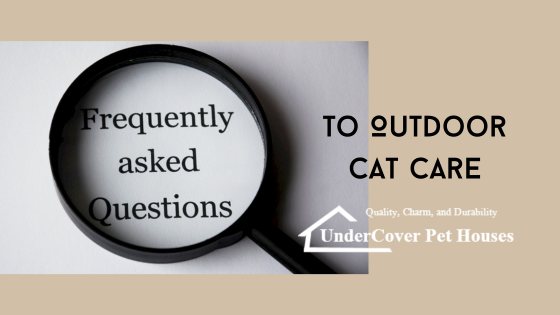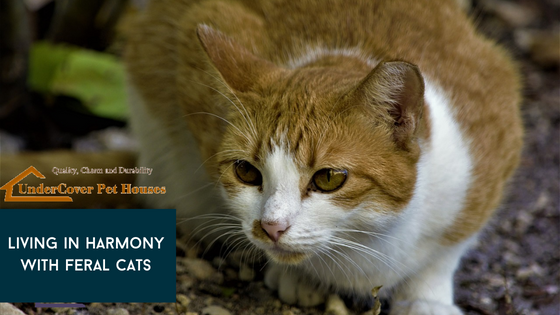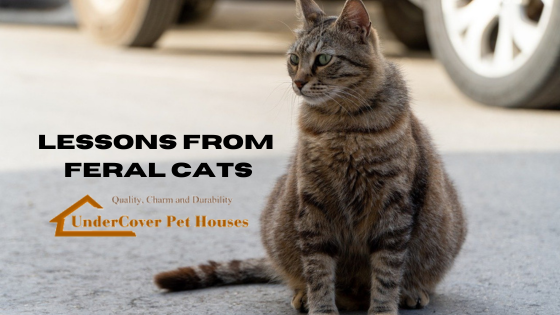 Loading... Please wait...
Loading... Please wait...Blog - feral cat
Feline Acne: Causes, Treatment, and Prevention
Posted by Danny MacDonald on 2024 Apr 9th

Feline acne is a skin condition that affects cats of all ages and breeds around their chin and lip areas. While the condition may not be life-threatening, it can cause uneasiness and concern for affected cats and their owners.
In this blog article, we'll look into the clinical signs, treatment options, and prevention strategies for feline acne.
Signs of Feline Acne
Feline acne is usually displayed as small, black spots or bumps on the chin and lips. The lesions may progress to become inflamed or even develop into abscesses in severe cases. Other clinical signs may include the following:
- Extreme scratching of the chin area
- Swelling
- Inflammation
- Formation of scabs
- Pain or discomfort when touched
- Hair loss around the chin and lips
Feline Acne Treatment
Treatment for feline acne aims to minimize symptoms, reduce inflammation, and prevent recurrence. Depending on the acne condition, treatment options may include the following:
- Cleanse the affected area with a medicated shampoo or wipes to remove debris and excess oils.
- Applying medications such as benzoyl peroxide or chlorhexidine liquid to reduce inflammation and bacterial overgrowth.
- Give oral antibiotics in cases of severe inflammation and secondary bacterial infections.
- Use corticosteroids or anti-inflammatory medications to minimize discomfort and reduce swelling.
Diet Management
- Use stainless steel or ceramic water and food bowls to reduce irritation from plastic material
- Provide a hypoallergenic or novel protein diet if food allergies are contributing to feline acne.
Environmental Changes
- Provide your cat with a clean and stress-free environment to minimize worsening the issues.
- Regularly clean and disinfect cat litter boxes, bedding, and other surfaces to prevent contamination.
Preventing Feline Acne
Preventing feline acne involves applying strategies to reduce the risk of flare-ups and promote overall skin health.
Here are some preventive measures to consider:
- Hygiene: cleanse your cat's chin area softly with a damp cloth or specialized acne wipes to remove debris.
- Avoid using cleansers that may irritate the skin.
- Proper Diet and Nutrition: Provide a high-quality and balanced diet that meets your cat's nutritional needs.
- Avoid feeding your cat from plastic dishes, as they can easily harbor bacteria and contribute to chin acne. If you care for feral cats, consider using cat feeding stations to ensure cat food and water are clean and dry.
- Minimize stress in your cat's environment, such as loud noises, overcrowding, or sudden changes.
- Provide cat enrichment activities and plenty of play, unwinding and relaxation opportunities.
- Schedule regular check-ups with your pet doctor to monitor your cat's skin health and address concerns. Always follow your veterinarian's recommendations for parasite prevention and flea to reduce the risk of skin irritation and inflammation.
In Sum,
Feline acne is a manageable condition that involves proper diagnosis, treatment, and preventive care.
Understanding the signs, treatment options, and prevention approaches mentioned in this article can help your cat enjoy healthy and clear skin. If you notice any changes in your cat’s behavior or inflammation in your cat's skin, consult your vet for advice and care.
Are you looking for the best cat houses? Check out our wide selection at UnderCover Pet Houses!
The Ultimate Guide to Pet Houses (Everything You Need to Know)
Owning a pet brings joy, but it also comes with responsibilities. One of the responsibilities involves providing a safe and comfortable space for our beloved feline companions, especially if you own an indoor cat or care for feral cats. Just like humans, pets need a safe space to call their own—a haven where they can rest, relax, and play. [...]

Your FAQ Guide to Outdoor Cat Care
Whether you're a cat enthusiast, a seasoned feral cat caretaker, or even thinking about transitioning your indoor cat to the great outdoors, you probably have some questions about outdoor cat care.Outdoor cat care comes with its responsibilities and considerations.This comprehensive FAQ guide addresses five common questions about caring for outdoor and feral cat colonies.Let’s get started.1. How Can I [...]

DIY Cat-Friendly Christmas Crafts
The holiday season is here with us, and what better way to celebrate than by involving our feline friends in the festive fun?As the year closes in, how about embarking on a creative journey with our cats to craft some delightful DIY Christmas decorations that are safe and entertaining for our curious companions?This blog post explores step-by-step instructions to help you [...]

How to Live Harmoniously with Feral Cats (A Guide for Communities)
Feral cats live outdoors independently and play a major role in our neighborhoods. For example, they contribute to pest control by keeping rodent populations in check.Usually, feral cats are cautious when it comes to human interaction. So, it’s easy for conflicts to occur between them and people. This provokes the need for solutions, allowing humans and feral cats to [...]
How Outdoor Time Benefits Your Cats' Mental and Physical Health
Cats love freedom and have a deep connection to nature. So, they naturally enjoy the outdoors, which can enrich and heal their mental health.In this blog, we'll explore the profound impacts of outdoor time on your cat's well-being and provide practical tips for safely and responsibly incorporating the outdoors into your cat's life.1. Nature's stress [...]

Indoor vs. Outdoor Cat Housing: Pros and Cons
As a devoted cat owner, one of the crucial decisions you'll face is establishing the ideal living location for your feline companion—indoors, outdoors, or a blend of both.While the final choice is influenced by your cat's unique requirements and specific living circumstances, it's important to consider the advantages and drawbacks of indoor and outdoor cat housing carefully.This blog post explores the pros [...]
Secrets to Enhancing Your Outdoor Cat House (That Your Cat Will Love)
Outdoor cat houses provide safe and comfortable havens for your feline friends. However, the accessories you put in an outdoor shelter can truly transform it into a cozy retreat.According to research, cat owners believe outdoor cat house accessories improve their cat's quality of life. Moreover, cat owners also believe that outdoor cat houses with furniture are more likely to [...]
Feeding Feral Cats: Everything You Need to Know
Feral cats, also community cats, are a usual sight in urban and rural areas. These furry creatures are independent and have adapted to life outdoors.While they may seem self-reliant, feral cats need compassionate care from compassionate volunteers who can contribute to their welfare by providing them with food, water, and shelter.In this blog post, we will explore everything you need to [...]

Lessons from Feral Cats: What They Teach Us About Life
Feral cats live outdoors without owners, avoiding human contact. However, some feral cats become more comfortable with people who regularly feed and take care of them. They often live in groups called colonies, located close to shelter and food sources. Feral cats often lead lives that are a testament to the resilience and adaptability of nature and can offer [...]
